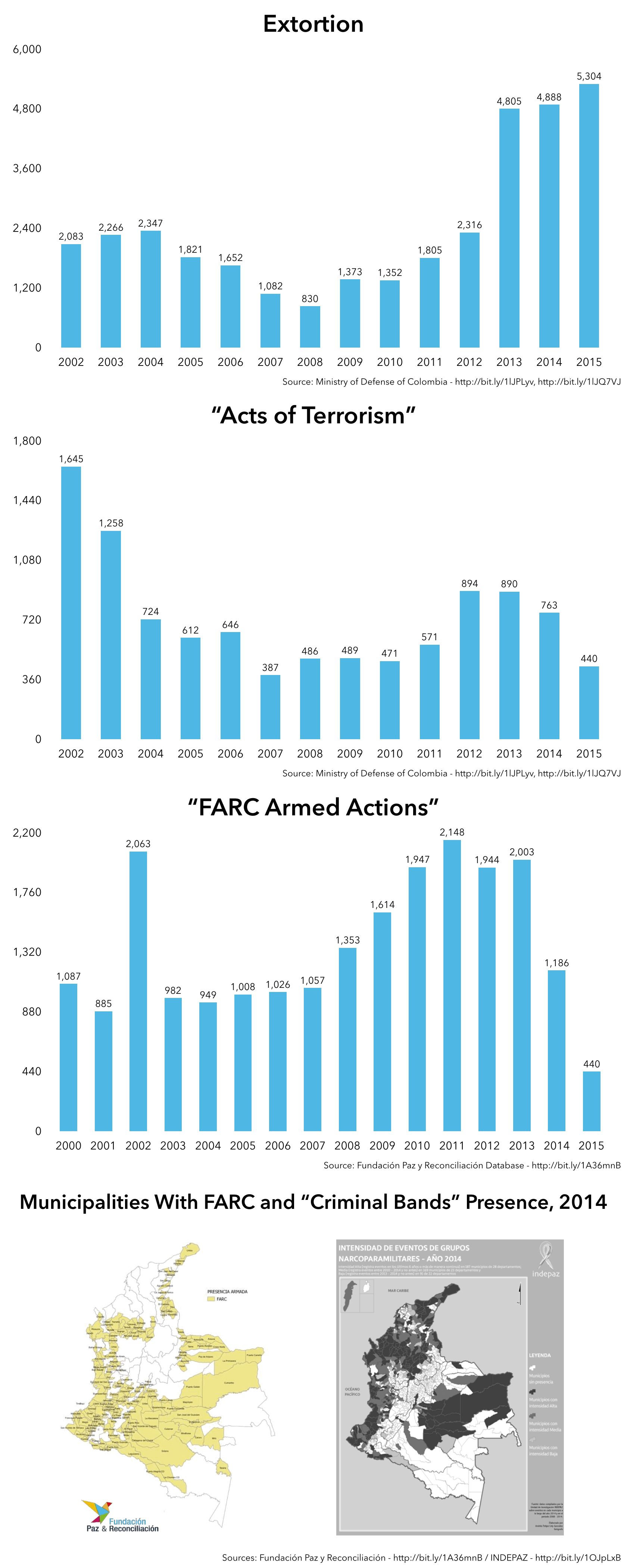Stubborn Challenges
The security gains of the “Plan Colombia” years were most concentrated in population centers and along main roads. For the 60-75 percent of Colombia’s population that lives in non-peripheral urban areas, improvements were dramatic.
Rural dwellers, though, saw far less impact. This is important because Colombia’s persistently ungoverned rural areas are where armed groups, narcotrafficking, land theft, and other organized crime activity like illegal mining and logging all continue to thrive. Even in small towns where anti-guerrilla offensives have brought a permanent security force presence, the probability of encountering armed groups remains high a few kilometers into the countryside.
(Text continues below the charts)

Independent monitors continue to record a large number of Colombian municipalities in which the FARC, ELN, and “criminal bands (BACRIM)” still operate with great freedom, or even exercise territorial control. This control is usually rural, though BACRIM and some guerrilla militias still have strong influence over many urban slums. This freedom of action is reflected in both official and NGO monitoring of guerrilla attacks, which increased troublingly between 2008 and around 2014, when the FARC began to de-escalate its activities within the framework of peace talks. Most of these attacks were on infrastructure targets like oil pipelines, and most were in less populated areas than during the late 1990s and early 2000s.
Other security indicators that remained persistently high were forced displacement (over 200,000 per year until 2015—see the chart in the “Notable Improvements” panel), cocaine production (see the “Drug Policy Remains Vexing” panel), illegal mining, and extortion. Colombia’s National Police view the recent explosion in extortion cases as mostly the work of criminals, not armed groups; still, in areas like Colombia’s Pacific coast, extortion by guerrillas and BACRIM pervades all levels of the economy.
 15
15